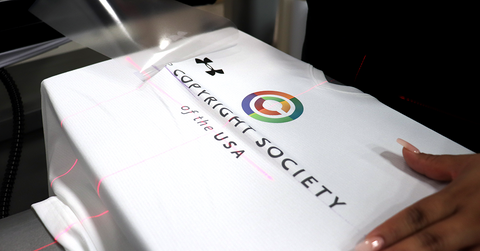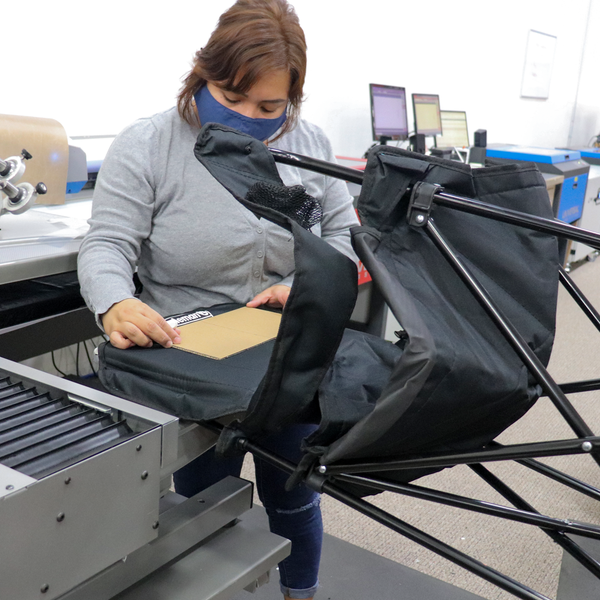Heat Transfer Printing Process Explained
Heat Transfer Printing Process Explained

Heat Transfer Printing for Corporate Apparel
Heat transfer printing is a newer decoration method, but it’s come a long way from the iron-on decals of old. With heat transfer, also known as digital transfer, your custom logo or design is printed onto transfer paper and then ink is thermally transferred from the paper to your fabric using heat and pressure. Be sure to check out our complete heat transfer capabilities where we breakdown when to use heat transfer as your custom decoration method. But for now, keep reading to find out how heat transfer printing is performed!
Watch this video for an overview of the heat transfer decoration process!
How does Heat Transfer Printing Work?
Heat transfer can be performed in a few different ways. There’s inkjet transfers, dye sublimation transfers, digital appliqué transfers, and vinyl transfers. You can check out our complete decoration methods guide for more detailed information on each type of heat transfer, but for now, we will breakdown how commercial heat transfer is performed on a more general basis.
10 Steps of Custom Heat Transfer Printing
- Acquire Necessary Supplies – we’ve got a complete shopping list for you below!
- Create Your Design – using graphic design software, mock up your design on a computer. Make sure to take size and ink color into consideration.
- Print Your Design – your company logo or custom design is printed onto special heat transfer paper using inkjet ink, pigment ink or sublimation ink depending on the product and application.
- Cut Out Your Design – a vinyl cutter is used to trim your image. This is only necessary for printed, supplier, and store-bought transfers and is not a part of our process at Merchology.
- Warm Up the Heat Press – open the press and separate the heat platen from your heat pad and leave it open while your heat platen is warming up. For most heat transfer applications, the temperature should be set between 350 to 375°F (177 to 191°C).
- Adjust the Pressure – the pressure of the press is based on the thickness of the fabric; thicker fabric requires less pressure. For most projects, medium or high pressure is used.
-
Set the Time – this is important because there are different times associated with different types of heat transfer. You can use the timing below as a guide:
- Inkjet Transfer Paper: 14 – 18 seconds
- Dye Sublimation Transfer: 25 – 30 seconds
- Digital Appliqué Transfer: 20 – 30 seconds
- Vinyl Transfer: 45 – 60 seconds
- Set the Substrate & Transfer in Place – position your product onto the plate and place the transfer paper face up on the desired location of your product within the pressing area. For applique transfer and vinyl transfer you will need to cover the transfer paper with a thin cloth to protect it.
- Press the Product – once your product is in place, close the press by pulling the handle down to clamp the press shut. By now your time, temperature and pressure should be set, so it’s as easy as pressing the start button.
- Remove the Film – after the timer goes off simply open the press and remove the film while the transfer paper is still hot and your design should be printed onto your product. Just like that, your heat pressed custom apparel is complete!

What Equipment & Supplies are Needed for Heat Transfer Printing?
Heat transfer can be accomplished through a few different methods, but for this page, we will focus on commercial applications for heat transfer printing as opposed to DIY heat transfer you can do at home with an iron. Here’s what the heat transfer experts at Merchology use to apply your company logo to your product through heat transfer:
- Computer – a computer with graphic design software is required to create your custom design to be printed for heat transfer.
- Printer – a printer that is used for heat press applications are usually larger than your average printer by a fair margin to accommodate larger designs. Aside from size, printers used for heat transfer function the same as a normal inkjet printer, just with different ink and special transfer paper.
- Ink – there are a few different types of inks used in heat transfer printing to achieve different finishes. Inkjet ink is the most commonly used because it is the most affordable and accessible ink type. Pigment ink is also used for fade resistance and sublimation ink is used for dye sublimation printing.
- Heat Transfer Paper – this is special paper that is designed for heat transfer and is usually coated in a wax and pigment polymer film that makes a permanent bond with the fabric fibers when heated. Transfer paper typically comes in 13” by 19” sheets to offer increased freedom of design.

- Cutter – a vinyl cutter is used to cut out the design from the transfer paper to be applied to the substrate.
- Heat Press – heat presses come in a few shapes and sizes depending on the heat transfer application. Swing-away flat bed machines and clam shell presses are used for custom shirts and other flat apparel or accessories. There are also cylinder-shaped heat presses for transferring onto rounded objects like custom water bottles and coffee mugs.
- Heat Pads – these are placed on the bottom platen of the heat press and serve as the surface for your product in the heat transfer process. Heat pads are typically made of heat resistant foam or silicone rubber.
- Heat Tape – this heat resistant tape is used to hold the transfer paper in position on the product.
- Heat Resistant Sheeting – these are usually made of Teflon and are placed between the heating platen and transfer paper to keep your heat press clean and prevent the transfer paper from scorching.
- Substrates – this is the actual product that you are decorating – this could be a custom t-shirt, sweatshirt, polo shirt, bag, drinkware or much more. It’s the canvas for your heat transferred masterpiece!
Next Steps
Now that the heat transfer process is no longer a mystery, find out when you should choose heat transfer as your decoration method in our heat transfer capabilities and applications guide.
Dive deeper into the differences between heat transfer vs. screen printing and heat transfer vs. dye sublimation. Finally, be sure to check out our complete Custom Decoration Methods Guide to find the perfect decoration type for any application.


